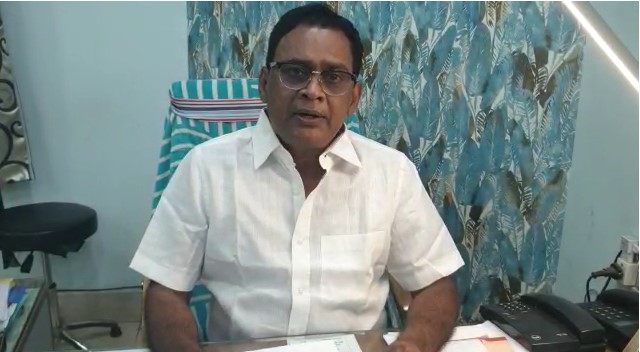Bhubaneswar: The Ministry of Health & Family welfare has issued a revised guidelines for home isolation of very mild symptomatic COVID-19 cases.
As per the revised guidelines in addition to the guidelines on appropriate management of suspect or confirmed case of COVID-19 issued by the Ministry of Health & Family Welfare on April 27, the patients with mild symptoms of COVID-19 can stay in home isolation after being certified by the medical officer.
“In case of patients with mild COVID-19 symptoms and he has been certified by a medical officer, he/she is eligible for home isolation. The patient having requisite facility at his/her residence for self-isolation will have the option for home quarantine,” said Odisha Health & Family Welfare Minister Naba Kishore Das today.
As per existing guidelines, during the containment phase, the patients should be clinically assigned as very mild/mild, moderate/severe and accordingly admitted to COVID Care Centre, dedicated COVID Health Centre or dedicated COVID Hospital respectively.
Eligibility for home isolation:
1. The person should be clinically assigned as a very mild case/ pre-symptomatic case by the treating medical officer.
2. Such cases should have the requisite facility at their residence for self-isolation and also for quarantining the family contacts.
3. A care giver should be available to provide care on 24 x7 basis. A communication link between the caregiver and hospital is a prerequisite for the entire duration of home isolation.
4. The care giver and all close contacts of such cases should take Hydroxychloroquine prophylaxis as per protocol and as prescribed by the treating medical officer.
5. Download Arogya Setu App on mobile (available at: https://www.mygov.in/aarogya-setuapp/) and it should remain active at all times (through Bluetooth and Wi-Fi)
6. The patient shall agree to monitor his health and regularly inform his health status to the District Surveillance Officer for further follow up by the surveillance teams.
7. The patient will fill in an undertaking on self-isolation and shall follow home quarantine guidelines. Such individual shall be eligible for home isolation.
In case, the patient develops serious symptoms including difficulty in breathing, persistent pain or pressure in the chest, mental confusion or inability to arouse and developing bluish discolorations of lips or face, the care giver will immediately seek medical attention.
The home isolation will end after 17 days of onset of symptoms (or date of sampling, for pre-symptomatic cases) and no fever occurs for 10 days.
As per the revised guidelines, there is no need for testing after the home isolation period is over.
Here’re instructions for care-givers:
1. The caregiver should wear a triple layer medical mask appropriately when in the same room with the ill person. Front portion of the mask should not be touched or handled during use. If the mask gets wet or dirty with secretions, it must be changed immediately. Discard the mask after use and perform hand hygiene after disposal of the mask
2. He/she should avoid touching own face, nose or mouth.
3. Hand hygiene must be ensured following contact with ill person or his immediate environment. Hand hygiene should also be practiced before and after preparing food, before eating, after using the toilet, and whenever hands look dirty. Use soap and water for hand washing at least for 40
seconds. Alcohol-based hand rub can be used, if hands are not visibly soiled.
4. After using soap and water, use of disposable paper towels to dry hands is desirable. If not available, use dedicated clean cloth towels and replace them when they become wet.
5. Avoid direct contact with body fluids of the patient, particularly oral or respiratory secretions. Use disposable gloves while handling the patient. Perform hand hygiene before and after removing gloves.
6. Avoid exposure to potentially contaminated items in his immediate environment (e.g. avoid sharing cigarettes, eating utensils, dishes, drinks, used towels or bed linen).
7. Food must be provided to the patient in his room. Utensils and dishes used by the patient should be cleaned with soap/detergent and water wearing gloves. The utensils and dishes may be re-used. Clean hands after taking off gloves or handling used items.
8. Use triple layer medical mask and disposable gloves while cleaning or handling surfaces, clothing or linen used by the patient. Perform hand hygiene before and after removing gloves.
9. The care giver will make sure that the patient follows the prescribed treatment.
10. The care giver and all close contact will self-monitor their health with daily temperature monitoring and report promptly if they develop any symptom suggestive of COVID-19 (fever/cough/difficulty in breathing)
Here’re instructions for patient:
1. Patient should at all times use triple layer medical mask. Discard mask after 8 hours of use or earlier if they become wet or visibly soiled.
2. Mask should be discarded only after disinfecting it with 1% Sodium Hypo-chlorite.
3. Patient must stay in the identified room and away from other people in home, especially elderlies and those with co-morbid conditions like hypertension, cardiovascular disease, renal disease etc.
4. Patient must take rest and drink lot of fluids to maintain adequate hydration
5. Follow respiratory etiquettes all the time.
6. Hands must be washed often with soap and water for at least 40 seconds or clean with alcohol based sanitizer.
7. Don’t share personal items with other people.
8. Clean surfaces in the room that are touched often (tabletops, door knobs, handles, etc) with 1% hypochlorite solution.
9. The patient must strictly follow the physician’s instructions and medication advice.
10. The patient will self-monitor his/her health with daily temperature monitoring and report promptly if develops any deterioration of symptom as detailed below.


Comments are closed.